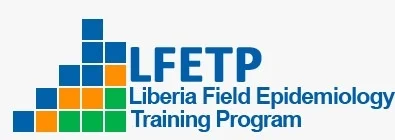The scientific subcommittee of the 3rd Emmet A. Dennis National Scientific Conference invites you to submit abstracts for the conference scheduled for 29th – 31st August 2022. Abstracts are accepted from fieldwork, program evaluation and research work in the following thematic areas
- COVID-19
- Outbreak Investigation and Response
- Antimicrobial Resistance
- Vaccination and Vaccine logistics
- Mobilizing Resources during a pandemic
- Maternal and child health during the pandemic
- Infectious Disease Epidemiology during the pandemic
- Public Health Workforce Development
- Border Health and Surveillance System
- Non-Communicable Disease Epidemiology during the pandemic
All the abstracts should be submitted through the website on or before Sunday 20th March 2022, 11.49 pm GMT (Liberia Time).
Signed
Scientific Committee, EDNSC
PROCEDURES AND DEADLINE:
Individuals or groups are invited to create an account, log in and submit their manuscript at https://abstracts.emmetdennisnationalscientificconference.com/ This method is the only submission method acceptable for an abstract to be considered. For questions and challenges about using the platform, please contact Siatta L.A. Gray at siatta.gray@nphil.gov.lr
INSTRUCTIONS FOR ABSTRACT SUBMISSION:
- Individuals should create abstracts as Microsoft Word documents. After login individuals should simply copy and paste their work on the web-based submission system.
- Individuals should ensure that each author listed on the abstract provides his/her email address. Otherwise, an author will NOT be recognized or credited for the abstract. Also, ensure that all authors listed as authors have agreed to be so listed.
- Changes cannot be made to the abstract after submission. For duplicate submissions, only the latest submission will be reviewed. No abstracts will be accepted past the official due date
- Researchers are expected to select one of the topics listed in the call for an abstract that best described their work
- The target audience includes disease surveillance officers, clinicians, FETP trainees and graduates, postgraduate students, researchers and policymakers
ABSTRACT FORMAT:
The abstract should not exceed 300 words. This count includes the subheadings of the structured abstract but does not include the title, author list and their addressees or keywords.
Abstracts must include the following sections:
- Introduction/Background
- Methods
- Results
- Conclusion
Introduction/Background: Address the scientific background and rationale for the study as well as the public health significance of the subject. Because of the anticipated diversity of the reviewers and those attending the conference, do not assume that everyone will be familiar with your research topic. Explain why your study is important and what question(s) it will answer. A clearly stated background sets the stage and describes the goal of the study and should include:
- A brief description of the topic and its public health significance
- Objectives, research questions or study hypothesis
Methods: Describe the methods selected for the study. Essential points to be included in this section are:
- Study design
- Study setting
- Study population
- Eligibility criteria
- Sample size and sampling methods
- Methods of data analysis
Results: Present the significant findings (both positive and negative) of the study that is directly related to the study objectives. This section should not include a discussion of the results. Provide both absolute numbers and their percentages/proportions. Since an abstract is a citable document, the results section must contain data. It should not include such statements as “Data will be discussed”. If considerable work is needed before the conference, please state that the results are preliminary.
Conclusion: This section should be as concise as possible. Do not restate the data included in the results. This section may include:
- An interpretation of the key findings and their implications on public health
- Public health actions that are recommended and/or have been implemented as a consequence of the study
Note:
Changes cannot be made to the final abstract after it is submitted. If, however, your abstract is accepted and significant changes have been made after submission of the abstract, please highlight the changes in your presentation.
Formatting
- The text should be left-aligned.
- Use font Times New Roman, size 12, 1.5 spacing.
- Each subheading should be in bold font and followed by a colon.
- Do not include any tables or graphs in the abstract.
- Avoid abbreviations; where used, mention them in full the first time they appear.
- Use italics for scientific names.
Abstract title
- The title should be descriptive but concise.
- Avoid subtitles if possible.
- Write the title in sentence case and only capitalize proper nouns and scientific names where appropriate e.g. Plasmodium falciparum
- Do NOT use abbreviations or acronyms in the abstract title
- Capitalize the second component of hyphenated terms.
- Give geographic location (country, state or city) and dates of study or investigation.
- Do not abbreviate geographic locations; separate them from the rest of the title by a dash, e.g., “Outbreak of Lassa fever – Bong County, 2020.”
Authors
- First author: Provide first name, initials of the middle name (if any), and the last name e.g. Elizabeth A. Bong
- Co-authors: List each co-author in order of contribution by typing their first and middle names as initials followed by their last name in full (e.g. L. Vonhgm, H. P. Zollik)
- Provide the organizational affiliations of the first author and all co-authors
- Indicate the corresponding author with an asterisk* and provide their email address and telephone number plus their alternate contacts
- Provide the email address and telephone number of the first author if the latter is not the corresponding author
Key words
Please include 4 – 6 keywords. Use terms listed in the Medical Subject Headings (MeSH) from the Index Medicus (http://www.nlm.nih.gov/mesh/meshhome.html)
Evaluation Criteria
Each abstract will be evaluated by three independent reviewers according to the following criteria:
- Background and rationale of the study
- Appropriateness of methods
- Presentation of results
- Conclusions and interpretations of results
- Public health significance
- Overall clarity of the abstract
- Originality

